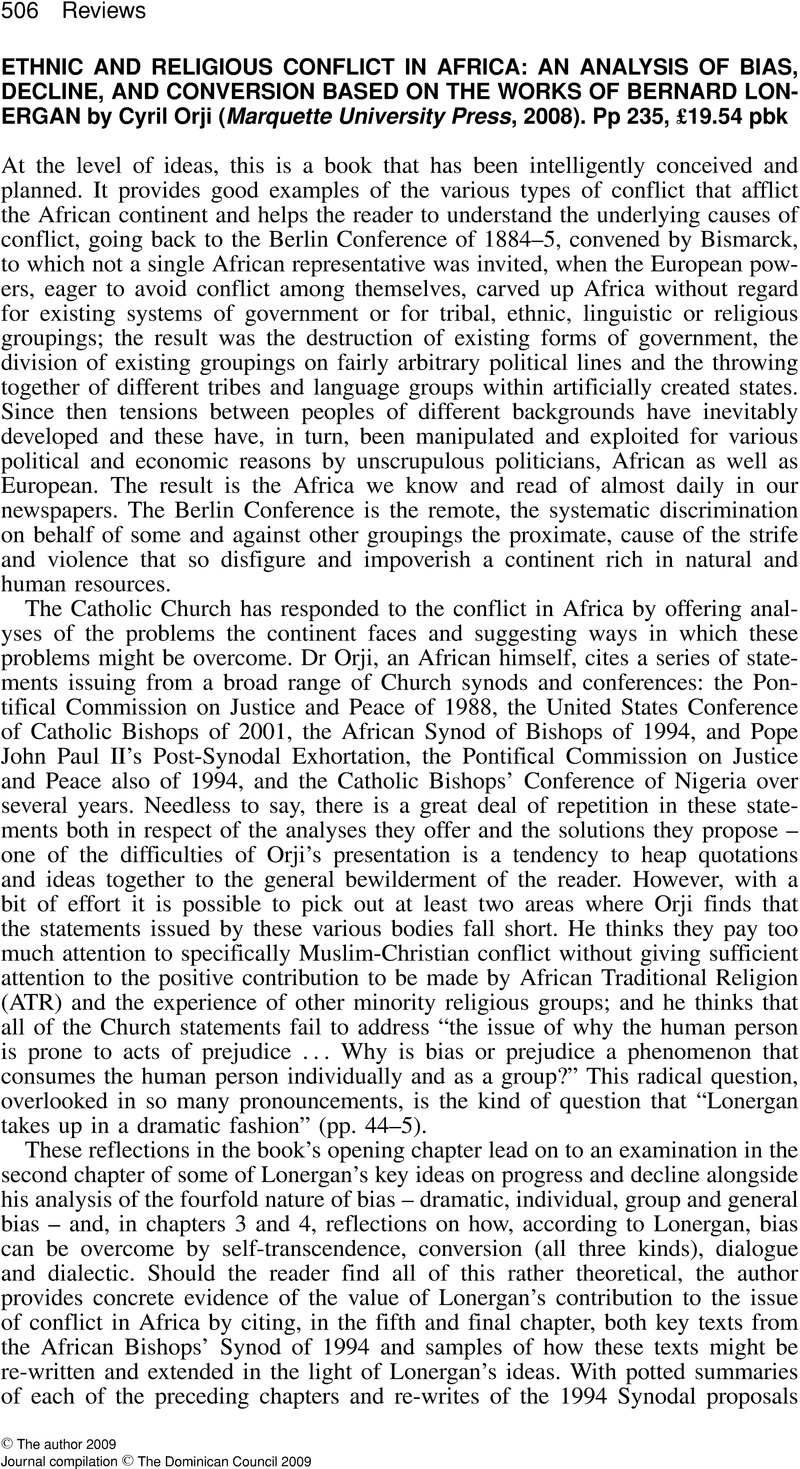No CrossRef data available.
Article contents
Ethnic and Religious Conflict in Africa: An Analysis of Bias, Decline, and Conversion Based on the Works of Bernard Lonergan by Cyril Orji (Marquette University Press, 2008). Pp 235, £19.54 pbk
Review products
Ethnic and Religious Conflict in Africa: An Analysis of Bias, Decline, and Conversion Based on the Works of Bernard Lonergan by Cyril Orji (Marquette University Press, 2008). Pp 235, £19.54 pbk
Published online by Cambridge University Press: 01 January 2024
Abstract
An abstract is not available for this content so a preview has been provided. Please use the Get access link above for information on how to access this content.

- Type
- Reviews
- Information
- Copyright
- Copyright © The author 2009. Journal compilation © The Dominican Council 2009


